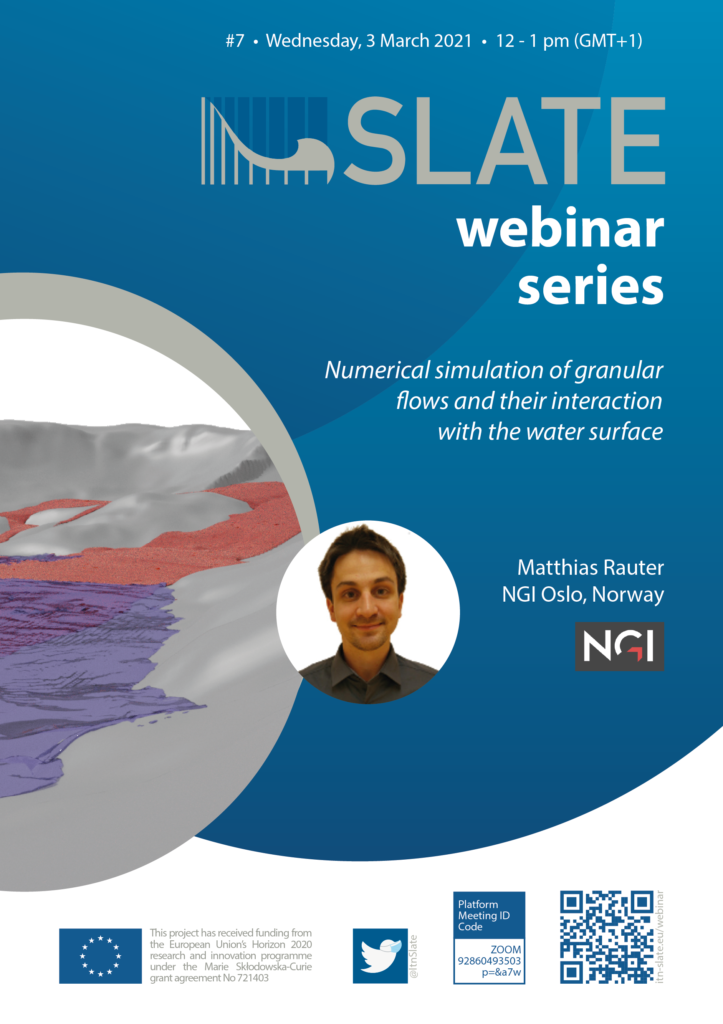
The Navier-Stokes Equations describe fluids with great accuracy. They describe air flow and weather phenomena, pipe and river flows, ocean currents and surface waves.
In my thesis I show the generalisation of the Navier-Stokes Equations to include plasticity models that are suitable for granular materials. This allows us to describe subaerial dense granular flows, such as landslides and avalanches. In a further step, the model is extended to a dynamic mixture of grains, air and water using the multiphase Navier-Stokes Equations, Critical State Theory and various semi-empirical scaling relations derived from laboratory experiments. This system describes a wide range of granular flows, from dense flows to turbidity currents with few but meaningful parameters. Further it enables us to quantify pore pressure effects and their mobilizing or stabilizing influence on slopes and landslides. The result is an accurate model for subaerial and subaquatic landslides and the impulse waves that they generate when interacting with the water surface. The model is solved numerically with the software toolkit OpenFOAM and validated with a large range of laboratory experiments. Finally, I show the application of the model to the 2014 Lake Askja landslide tsunami with unprecedented details and accuracy.
When & Where?
- Wednesday, 3 March 2021
- 12 pm – 1 pm (GMT+1)
- via ZOOM
- permanent Zoom Link
- ID: 928 6049 3503 Code: p=&a7w
Webinar Flyer:


